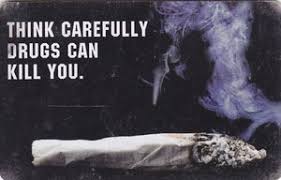Drugs of abuse may make the user feel pleasure, but they are also toxic. We often hear that long-term drug abuse is bad for our health and that even a single use of a drug can kill. But how can drug use lead to death?
 Heroin and alcohol: A deadly combination
Heroin and alcohol: A deadly combination
Most people who overdose are under the influence of more than one drug. In 2003, the Drug Abuse Warning Network reported an average of 2.7 drugs in fatal overdose cases.
Importantly, in these cases, no single drug is usually present at a lethal dose. Rather it is the synergistic effects of combining the drugs that is lethal. And the majority of overdoses involve legal drugs. For example, a combination of opiates (heroin or prescription painkillers) and alcohol can be especially dangerous. Both suppress breathing, but by different mechanisms.
In the United States, prescription opiates are the cause for more deaths by overdose than any other single drug. Most of these deaths ultimately result from respiratory failure. A toxic opiate dose increases the inhibitory effect of GABA, which causes breathing to slow and eventually stop.
Alcohol overdoses occur mainly in two ways. First, by decreasing the excitatory effect of glutamate, alcohol causes unconsciousness. At high levels, it can also slow or stop breathing. Second, the body tries to rid itself of unabsorbed alcohol by emptying the stomach. If a person vomits while they are unconscious, they may inhale the vomit and compromise their breathing or even drown.

Nicotine

Smoking cigarettes can kill by causing lung cancer, but it cannot lead to a nicotine overdose. However, it is possible to overdose on nicotine by using combinations of nicotine patches or nicotine gum and cigarettes at the same time. This combination puts much more nicotine into the body than smoking alone. Sometimes, nicotine can reach levels high enough to paralyze the muscles that control breathing or cause a heart attack.
Cocaine and Other Stimulants
Stimulants such as cocaine and methamphetamine trigger the release of the adrenaline-like hormone norepinephrine, which causes increased activity, increased heart rate and blood pressure, and narrowing of blood vessels.
Cocaine can kill in a variety of ways, most commonly heart attack, overheating (hyperthermia), and brain damage. After taking even a low dose of cocaine, you are 24 times more likely than normal to have a heart attack.
Amphetamine, methamphetamine, and MDMA (ecstasy) are also stimulants. They all increase levels of the neurotransmitter dopamine and the hormone norepinephrine, potentially causing heart attack, overheating, and/or brain damage. Because the “club drug” ecstasy is often used in hot, overcrowded conditions where people are dancing, overheating is the most common result of an ecstasy overdose.

